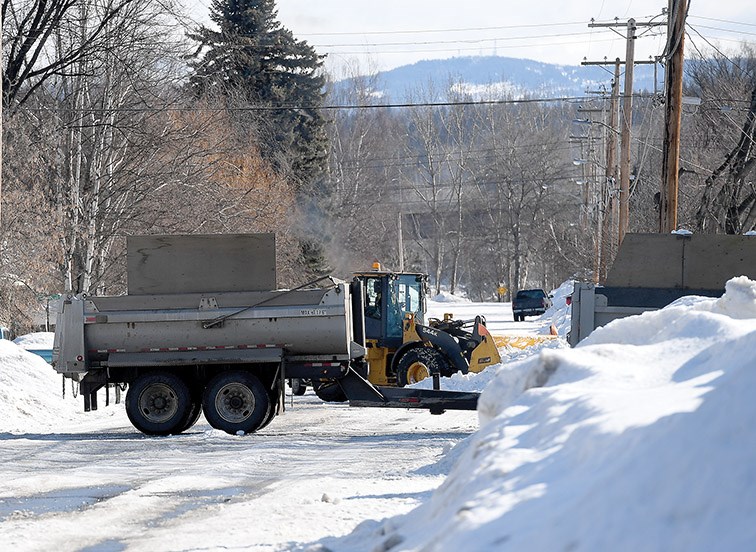Crews will have some leeway on the time they have to clear city streets in the event of a major snowfall under a revamped snow and ice control policy approved by city council this week.
Whenever the accumulation reaches 20 cm in a 24-hour period, administration can issued a "heavy snowfall declaration" that adds another day to the time limits set out under the policy.
Moreover, for each additional eight cm that falls over that time, another 24 hours of clearing time can be added.
It also allows snow clearing crews to start work on the top-priority routes in the city's downtown at 11 p.m., an hour earlier than usual.
The step follows on the difficulty crews had meeting timelines during the holiday season last winter when 35 cm of snow fell on the city over two days and in an interview, city public works director Gina Layte-Liston called it the most important of the changes set out under the new policy.
Other changes include allowing crews to work overnight in residential areas, limiting the clearing of driveway entrances to eight metres of width and, under a pilot program, assigning equipment to the College Heights-Vanway area, similar to the way the Hart is treated.
Because of the way the garbage collection days fell, the so-called "blue zone" of College Heights-Vanway suffered through an extended period of uncleared streets as successive snowfalls forced crews to return to higher-priority routes while also working to clear other zones ahead of their respective collection days.
"That was quite frustrating for residents and we saw that in our service requests," Layte-Liston said. "So the hope is that for those outlying areas, having assigned equipment will benefit."
Layte-Liston said the city will continue to rely on a "retainer system" as opposed to buying more of its own equipment to clear snow, "and then trying to get the operators."
"With the pipelines and such, it's only going to become more difficult to find operators that we can have working for us for the winter season," she added. "We do hire that staff for the winter season and so it isn't year-round work for them."
Time limits for clearing routes will remain the same - 48 hours for priority one and two routes once 7.5 cm has fallen and 72 hours after completion of priority ones and twos for the remainder of the city once 12 cm has fallen. The maximum amount of compact snow will remain at 2.5 cm.
The policy also includes standards for ice control.
Liquid salt can be applied to priority ones and twos up to 24 hours in advance of a snowfall when it shows a 60-per-cent or greater likelihood of occurring and the temperature is warmer than -20 C.
Rock salt will be selectively applied to melt snow and ice immediately after priority ones and twos are cleared whenever it's warmer than -7 C.
Liquid salt will also be mixed into 100 per cent of abrasives and road salt prior to their application and winter crush and sand will be applied to intersections, stops, sidewalks and hills and bends on priority ones and twos whenever ice forms and on priority three areas when conditions merit.
The changes also follow on a report from retired city administrator Frank Blues outlining some suggested adjustments to the way the city tackles snowfalls.



